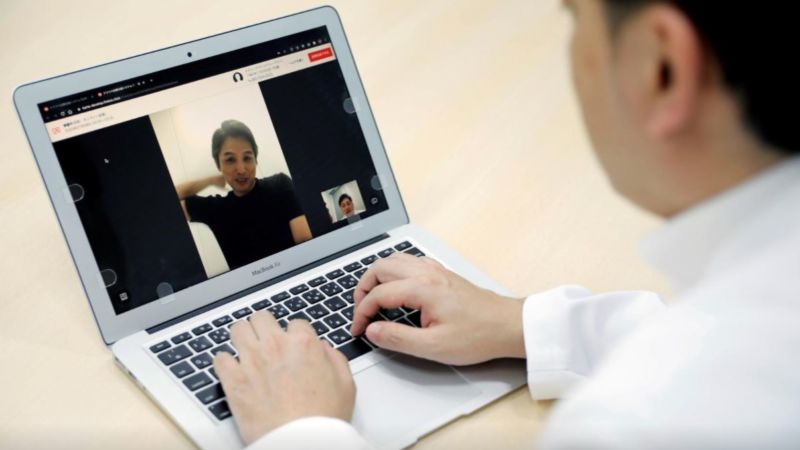As the number of medical patients seeking telehealth visits bloomed during the pandemic, so did the potential for fraud and abuse
As the COVID-19 pandemic radically changed every aspect of our lives, we’ve become accustomed to staying home and letting necessary goods and services come to us. This was especially true for healthcare as virtual medical visits and examinations, so called telehealth, took off.
Indeed, there were 23-times the number of medical visits each week via telehealth than before the pandemic, according to a recent study published in Health Affairs. Between mid-March and mid-October 2020, almost 40%, or about 24.5 million out of 63 million Medicare beneficiaries and enrollees received a Medicare telehealth service, according to the Centers for Medicare & Medicaid Services (CMS).
Although the fear of exposure and spread of COVID-19 drove up demand for virtual healthcare, policy changes early in the pandemic made it possible. Prior to the declaration of the public health emergency, only a handful of providers could bill Medicare for telehealth services under certain limited circumstance. In March 2020, the Trump administration acted to expand telehealth services to including coverage for common office visits, mental health counseling, and preventive health screening. By the end of 2020, CMS had added more than 144 telehealth services. Currently, providers can deliver telehealth services across state lines under some circumstances and even prescribe controlled substances without an in-person medical evaluation.
Additionally, public and private payers increased reimbursement rates to a level comparable to in-person visits. Prior to the pandemic, reimbursement rates for telehealth services were typically 20% to 50% lower than for in-person visits.
Increased forecast of fraud
Of course, with increased telehealth activity, is the increase chances for telehealth-related fraud. The Office of Inspector General (OIG) for the U.S. Department of Health and Human Services (HHS) is “conducting significant oversight work assessing telehealth services during the public health emergency” and there have already been enforcement actions relating to telehealth during the pandemic.
“It is important that new policies and technologies with potential to improve care and enhance convenience achieve these goals and are not compromised by fraud, abuse, or misuse,” said Christi A. Grimm, HHS-OIG Principal Deputy Inspector General.
Grimm distinguished between telefraud schemes and telehealth fraud. However, she also noted that “unscrupulous doctors” can conduct “sham remote visits to increase the size and scale” of their criminal operations. In those cases, the provider may not even bill for the telehealth visit but will only bill for the much more expensive durable medical equipment (DME) or genetic testing.
Many of these schemes have resulted in enormous losses to taxpayers through Medicare fraud.
For example, a Florida businesswoman last month entered a plea agreement to resolve criminal allegations and civil claims involving more than $400 million in false claims in February 2021. Kelly Wolfe and her co-conspirators established dozens of DME supply companies in the names of false owners. They then submitted more than $400 million in illegal DME claims to government programs, saying the high volume of claims was due to the use of telehealth when, in reality, they were bribing doctors to approve the claims. Often, the doctors had no telehealth interaction with the patients.
In January, the owner of an Orlando-area telemarketing call center was convicted of a $2.8 million kickback scheme involving genetic testing and fraudulent telemedicine services. According to the evidence in his trial, the owner used his telemarketing call center to target Medicare beneficiaries and falsely telling them Medicare covered “expensive cancer screening genetic testing.” Each test cost as much as $6,000. After a beneficiary agreed to take the test, the owner paid bribes and kickbacks to telemedicine companies to obtain doctor’s orders authorizing the tests.
In 2019, a similar scheme resulted in one of the largest ever healthcare enforcement actions, charging 35 individuals with healthcare fraud after they fraudulently billed Medicare more than $2.1 billion for cancer genetic testing. The defendants were associated with “dozens of telemedicine companies” and cancer genetic testing laboratories. They also controlled a telemarketing network that was used to lure hundreds of thousands of patients into a “nationwide” criminal scheme, according to the government’s allegations. The defendants allegedly paid doctors to prescribe cancer genetic testing, either without any patient interaction or “with only a brief telephonic conversation with patients they had never met or seen.”
Temporary telehealth expansion may become permanent
Many stakeholders are urging CMS to make the temporary expansion of telehealth coverage a permanent solution. “It’s time to make Medicare reimbursement for telehealth permanent,” U.S. Rep. Anna Eshoo (D-Cal.), chair of the House’s Health Subcommittee, said in her opening statement at a recent hearing on telehealth.
Also, U.S. Rep. Fred Upton (R-MI) described telemedicine as a “win-win” and also supported maintaining the new expanded access.
Some providers report that even after doctors have reopened for in-person visits, virtual visits have stabilized at 30% to 40% of all visits and that they expect this to be the “new normal.” Further, patient satisfaction with virtual patient care is high, with one survey finding 87% of respondents saying they would recommend telehealth and 73% saying they wanted to continue its use.
Although making telehealth expansion permanent will increase patient access to care and has the potential to reduce healthcare costs, it may also provide yet another tool for the unscrupulous to exploit vulnerable patients and steal from government healthcare programs such as Medicare and Medicaid.
Expanded telehealth use makes it all the more important for government payers and private insurers to be aware of usage trends and watch for possible fraudulent schemes.







